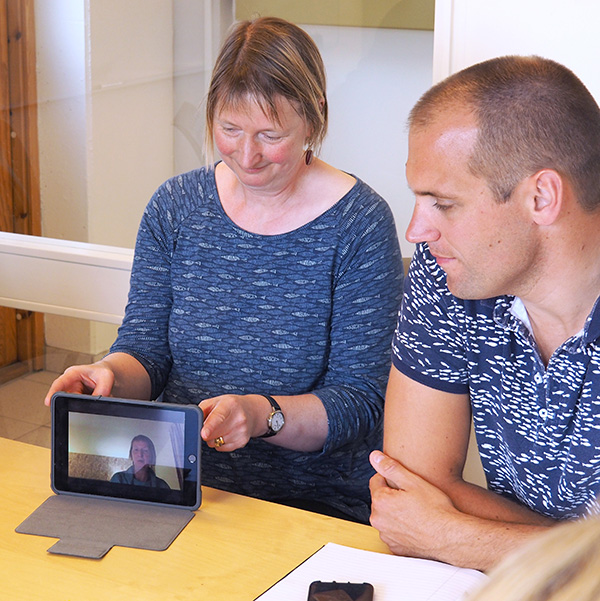
Looking at Educational Improvement from a Lifelong Learning Perspective
September 8, 2019
LGBTQI+ Diversity Work in Teacher Education
October 26, 2019Learning to teach starts with “learning to look”

A ‘viewing frame’ for observing teacher educators and teachers

Introduction
How student teachers learn to teach has been dominated by the idea that the “knowledge of teaching is acquired and developed by the personal experience of teaching” (Munby, Russell, and Martin (2001, p.587). Of course, this is an important part of how new teachers learn how to teach, though I am also interested in the value of the pre-practicum phase and how this contributes to their knowledge of how to teach. Specifically, I have become interested in the contribution teacher educators’ modelling of teaching strategies and behaviours can make to student teachers’ practice and in particular the role of “learning to look” (Powell, 2016) as a way of learning to teach. Influenced by the painter David Hockney’s (2014) claim that “teaching people to draw is teaching people to look”, my assertion is that learning to teach starts with “learning to look”.
Observing teacher educators and other teachers teaching is seen as a valuable feature of initial teacher education programmes. However, there is often an assumption that student teachers know how to observe. This assumption has been fed by Lortie’s (1975, p.61) claim that by watching almost “13,000 hours” of teaching by the age of 18 all student teachers have undergone an “apprenticeship of observation”. However, they were learning a subject to pass an exam, not apprentice teachers learning to teach.
Lunenberg, Korthagen, and Swennen’s (2007) emphasise the value of modelling, though they also acknowledge that it is not always effective as a strategy. This raises an important question for teacher educators: how do we teach student teachers to observe our and others’ implicit modelling? Some suggest using videos to develop this skill (Star and Strickland, 2008), others a lesson observation pro-forma from the course. I have developed a Viewing Frame.
Why a Viewing Frame?
Whilst working with a team of teacher educators from one English further education college to explore the use of modelling within their practice, it became clear that their student teachers did not always notice the modelling of teaching strategies or behaviours, so we discussed how to address this. One of the teacher educators suggested that student teachers needed a viewing frame, the visual equivalent of a writing frame, to scaffold and develop their observation skills. Based on this suggestion, I developed and piloted what is now the Viewing Frame in my own teaching and have subsequently shared it with other teacher educators to gain feedback on its effectiveness as a pedagogical resource for teacher education.
The Viewing Frame comprises of five columns. The first lists in chronological order the activities of a class, the other four columns are a series of questions based on the four forms of modelling identified by Lunenberg, Korthagen, and Swennen. (2007). For example, the second column asks “What are David’s “sayings, doings and relatings”?” inviting the student teachers to record in that column what they notice. Their notes can then be used as a basis for a discussion led by the teacher educator about their practice. The decision to invite student teachers to notice the “sayings, doings and relatings” of their teacher educator, or another teacher, is informed by Kemmis et al.’s (2014) claim that practices consists of these three actions. They suggest that what we say mirrors the ideas of the cognitive domain; what we do reflects the actions of the psychomotor domain; and how we relate to others reflects the behaviours of the affective domain. It seems to me that student teachers should notice all three of these elements when learning to teach.
The other three columns focus on teacher educators’ decision making, what student teachers might apply to their own teaching, and the theories that might be underpinning the teacher educators’ practice. When using the Viewing Frame, I also share my lesson plan with my student teachers to help them see into my pedagogical planning and decision making before and during the class.
A free, downloadable version of the Viewing Frame, along with guidance on effective ways of using it for teacher educators and student teachers, is available from the University of Hertfordshire - For Learning in Teacher Education (FLiTE).
References
Hockney (2014) Directed by Randall Wright. UK: Channel 4 Films.
Kemmis, S., Wilkinson, J., Edwards-Groves, C., Hardy, I., Grootenboer, P., and Bristol, L., (2014) Changing practices, changing education. London: Springer
Lortie, D. (1975) Schoolteacher: a sociological study, Chicago, IL, The University of Chicago Press.
Lunenberg, M., Korthagen, F., and Swennen, A. (2007) The teacher educator as a role model. Teaching and Teacher Education, 23, (5) pp.586-601.
Munby, H., Russell, T., and Martin, A.K. (2001) Teachers’ knowledge and how it develops. In: Richardson, V., ed. Handbook of research on teaching. 4th ed. Washington, D.C., AERA, pp.877-904.
Powell, D., (2016) “It’s not as straightforward as it sounds”: an action research study of a team of further education-based teacher educators and their use of modelling during a period of de-regulation and austerity. Unpublished EdD thesis. University of Huddersfield.
Star, J., and Strickland, J., (2008) Learning to observe: using video to improve preservice mathematics teachers’ ability to notice. Journal of Mathematics Teacher Education. Vol 11. pp107-125
David Powell
David Powell is director of the Education and Training Consortium, an ITE partnership between some 20 FE colleges and the University of Huddersfield.
He started his further education (FE) career at Stafford College in 1986 (his father taught Graphic Design there from 1964-1994). David moved from a senior management role, via staff development, into initial teacher education (ITE). His research interests include FE-based teacher educators' use of modelling and how student teachers learn how to teach. David is the editor of Teaching in Lifelong Learning, a journal to inform and improve practice aimed at the further education sector.
Email address: d.powell@hud.ac.uk
Twitter: @DavidPowellHud




